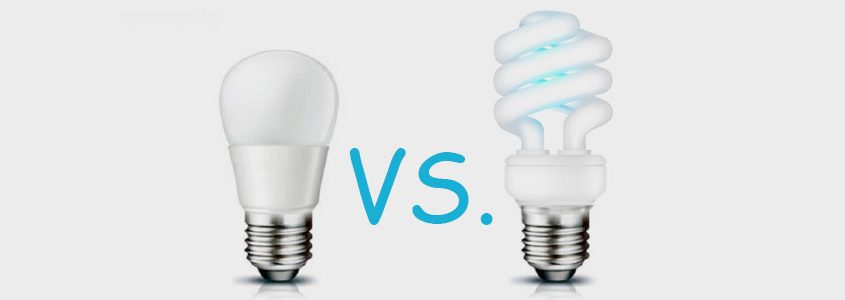LED Light Bulbs Vs. CFL Light Bulbs: Which is Best for Me?
Before we had LEDs, there were compact fluorescent lamps, or CFLs for short. CFLs are fluorescent lamps that emit light from a mix of phosphors inside the bulb, and were designed to replace incandescent lamps (a lamp that produces light as a result of being heated). When compared to an incandescent bulb producing the same amount of light, CFLs use one-fifth to one-third the electric power, and last eight to fifteen times longer. Like all fluorescent lamps, CFLs contain toxic mercury, which complicates their disposal. In many countries, governments have established recycling schemes for CFLs and glass generally.
A light-emitting diode, or LED for short, is a lamp that emits light in a very narrow band of wavelengths. Because of this, LED’s are far more energy efficient than incandescent or fluorescent lights, which emit light in a much wider band of wavelengths. LED’s produce light that renders a color similar (but not identical) to natural daylight, which is measured on a scale called CRI, or Color Rendering Index. CRI’s range from 0-100, 100 being identical to natural daylight. Typical LED’s are around 70-95 CRI, but it is not recommended to put anything indoors below 75 CRI. Like incandescent lamps and unlike most fluorescent lamps, LEDs come to full brightness without need for a warm-up time.
So how much more efficient are LED’s? On average, an incandescent bulb may last around 1000 hours, while a fluorescent (CFL) bulb producing the same amount of light (in Lumens) may last around 8,000 hours, and an equivalent LED bulb may last around 25,000 hours. Because of their efficiency, LED’s are generally more costly, but the energy saved on your electric bill pays off when compared to incandescent bulbs.



